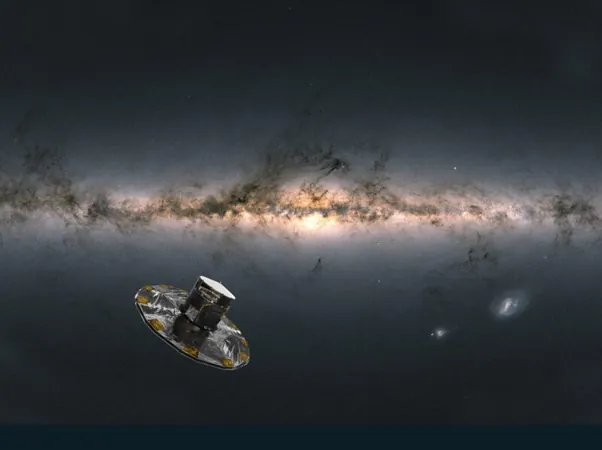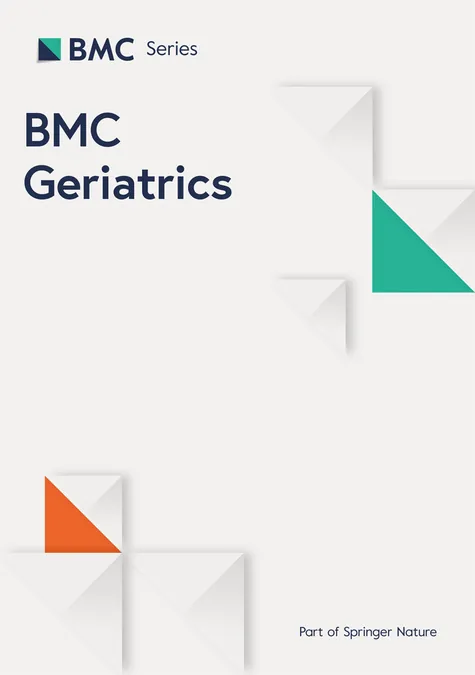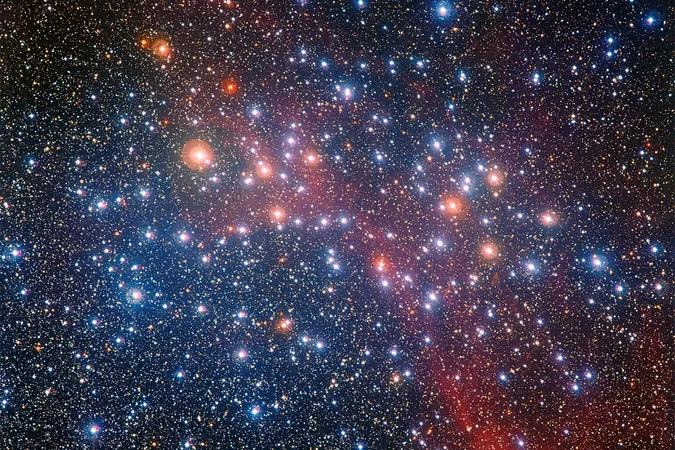
The Historic Journey of Gaia: A Decade of Discoveries Coming to a Close
2025-01-18
Author: Sophie
The Historic Journey of Gaia
The Gaia spacecraft, launched by the European Space Agency (ESA) in 2013, has successfully wrapped up the mapping phase of its ambitious mission. Over the past ten years, it has meticulously charted our galaxy, creating a breathtaking three-dimensional map that includes more than two billion stars in the Milky Way.
As Gaia prepares to conclude its extraordinary journey, the top-hat-shaped spacecraft is nearly out of fuel. With a daily consumption of just 12 grams of cold gas to maintain its spin, Gaia has now utilized a total of 55 kilograms of this vital resource, enabling it to carry out 15,300 precise maneuvers during its operational lifetime.
In this decade of exploration, Gaia has made a staggering three trillion observations, gathering critical data on the positions, distances, and motions of stars, as well as insights into their compositions and temperatures. The spacecraft has also meticulously tracked the orbits of over 150,000 asteroids and contributed to the discovery of new classes of black holes and numerous exoplanets, significantly expanding our understanding of the cosmos.
Scientific Breakthroughs and Revelations
Gaia's contributions to the field of astrophysics have been revolutionary. By precisely mapping star positions, the spacecraft has enabled scientists to delineate the Milky Way’s size and shape with unprecedented accuracy. The data garnered extends beyond mere mapping; it has facilitated the modeling of how our galaxy might appear from external vantage points.
"Fundamental ideas have been fundamentally altered, including the dynamics of our galaxy’s central bar, the configuration of the warp in the galactic disc, and new insights into interstellar dust surrounding our solar neighborhood," states Stefan Payne-Wardenaar from the Haus der Astronomie in Germany.
Since its operational debut, more than 580 million accesses to Gaia's data have been recorded, and it has become the foundation for over 13,000 scientific publications. Remarkably, only one-third of Gaia's collected data is currently available, indicating that a trove of discoveries is yet to be unveiled as additional datasets are released in the coming years.
The Final Stages of Gaia's Mission
As of January 15, Gaia has completed its final observations of starlight, yet its mission is not entirely finished. In the following months, the spacecraft will release two substantial streams of data before it transitions into retirement as a test vehicle.
On March 27, Gaia will change its orbit from the second Lagrange point (L2) to a position further away from Earth. This move is strategic, ensuring that Gaia does not interfere with other active spacecraft. During this transition period, scientists will continue to utilize Gaia to study the behavior of technology in space after an arduous decade of operation.
The legacy of Gaia is set to influence future astronomical research for years to come as researchers dive into the wealth of information it has provided. Its groundbreaking work has not only answered critical questions about our galaxy but has also paved the way for future missions aimed at unraveling the mysteries of the universe.









 Brasil (PT)
Brasil (PT)
 Canada (EN)
Canada (EN)
 Chile (ES)
Chile (ES)
 Česko (CS)
Česko (CS)
 대한민국 (KO)
대한민국 (KO)
 España (ES)
España (ES)
 France (FR)
France (FR)
 Hong Kong (EN)
Hong Kong (EN)
 Italia (IT)
Italia (IT)
 日本 (JA)
日本 (JA)
 Magyarország (HU)
Magyarország (HU)
 Norge (NO)
Norge (NO)
 Polska (PL)
Polska (PL)
 Schweiz (DE)
Schweiz (DE)
 Singapore (EN)
Singapore (EN)
 Sverige (SV)
Sverige (SV)
 Suomi (FI)
Suomi (FI)
 Türkiye (TR)
Türkiye (TR)
 الإمارات العربية المتحدة (AR)
الإمارات العربية المتحدة (AR)